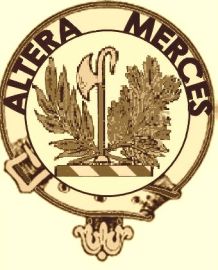Coll
Collagen is a protein that plays a crucial role in the structure of various tissues in the body, including skin, bones, tendons, and ligaments. It is the most abundant protein in the animal kingdom and is vital for providing strength and structure to the body's connective tissues.
Structure and Function[edit | edit source]
Collagen is composed of amino acids, with a unique triple helix structure that gives it remarkable tensile strength. This structure is formed by three polypeptide chains, which coil around each other in a tight helix. The primary amino acids in collagen are glycine, proline, and hydroxyproline, which contribute to its unique physical properties. Collagen fibers are cross-linked, which provides additional strength and stability.
In the body, collagen serves several functions. It helps to maintain the integrity of our cartilage, which is crucial for joint function. In the dermis layer of the skin, collagen helps to maintain elasticity and strength, reducing wrinkles and maintaining the skin's youthful appearance. In bones, collagen is a critical component of the matrix that supports the body's structure and helps in the process of bone formation.
Types of Collagen[edit | edit source]
There are at least 28 different types of collagen, each with a unique role in the body. The most common types are:
- Type I: Found in skin, bone, teeth, tendons, and ligaments, and is the most abundant collagen type in the body.
- Type II: Mainly located in cartilage, where it helps to maintain its elastic properties.
- Type III: Found in skin, muscle, and blood vessels, and is associated with the structure of organs and tissues that require elasticity.
- Type IV: Located in the basal lamina, the layer of the epithelium that separates cells from the underlying tissue.
Collagen Synthesis and Degradation[edit | edit source]
Collagen synthesis is a complex process that involves several steps, including the translation of collagen genes into precursor molecules called procollagen in the endoplasmic reticulum. Procollagen is then transported to the Golgi apparatus for further processing and is eventually secreted into the extracellular space, where it undergoes enzymatic modifications to form mature collagen fibers.
Collagen degradation is equally important for maintaining tissue health and is carried out by enzymes such as collagenases, which break down collagen fibers. This process is crucial for tissue repair and remodeling.
Health and Disease[edit | edit source]
Collagen plays a significant role in health and disease. Its production decreases with age, leading to a reduction in skin elasticity and the formation of wrinkles, as well as an increased risk of osteoarthritis due to the degradation of cartilage. Various genetic disorders, such as Ehlers-Danlos Syndrome, are caused by defects in collagen synthesis, leading to symptoms such as hyperflexible joints and fragile skin.
Dietary Sources and Supplements[edit | edit source]
Collagen can be found in the diet, primarily in foods rich in protein such as meat and fish. Gelatin, which is derived from collagen, is also a dietary source. In recent years, collagen supplements have become popular for their purported health benefits, including improving skin health, although the scientific evidence supporting these claims is still emerging.
Conclusion[edit | edit source]
Collagen is a fundamental component of the body's connective tissues, playing a critical role in maintaining the structure and function of various tissues. Understanding the synthesis, structure, and function of collagen is essential for comprehending its role in health and disease.
Search WikiMD
Ad.Tired of being Overweight? Try W8MD's physician weight loss program.
Semaglutide (Ozempic / Wegovy and Tirzepatide (Mounjaro / Zepbound) available.
Advertise on WikiMD
|
WikiMD's Wellness Encyclopedia |
| Let Food Be Thy Medicine Medicine Thy Food - Hippocrates |
Translate this page: - East Asian
中文,
日本,
한국어,
South Asian
हिन्दी,
தமிழ்,
తెలుగు,
Urdu,
ಕನ್ನಡ,
Southeast Asian
Indonesian,
Vietnamese,
Thai,
မြန်မာဘာသာ,
বাংলা
European
español,
Deutsch,
français,
Greek,
português do Brasil,
polski,
română,
русский,
Nederlands,
norsk,
svenska,
suomi,
Italian
Middle Eastern & African
عربى,
Turkish,
Persian,
Hebrew,
Afrikaans,
isiZulu,
Kiswahili,
Other
Bulgarian,
Hungarian,
Czech,
Swedish,
മലയാളം,
मराठी,
ਪੰਜਾਬੀ,
ગુજરાતી,
Portuguese,
Ukrainian
Medical Disclaimer: WikiMD is not a substitute for professional medical advice. The information on WikiMD is provided as an information resource only, may be incorrect, outdated or misleading, and is not to be used or relied on for any diagnostic or treatment purposes. Please consult your health care provider before making any healthcare decisions or for guidance about a specific medical condition. WikiMD expressly disclaims responsibility, and shall have no liability, for any damages, loss, injury, or liability whatsoever suffered as a result of your reliance on the information contained in this site. By visiting this site you agree to the foregoing terms and conditions, which may from time to time be changed or supplemented by WikiMD. If you do not agree to the foregoing terms and conditions, you should not enter or use this site. See full disclaimer.
Credits:Most images are courtesy of Wikimedia commons, and templates, categories Wikipedia, licensed under CC BY SA or similar.
Contributors: Prab R. Tumpati, MD





